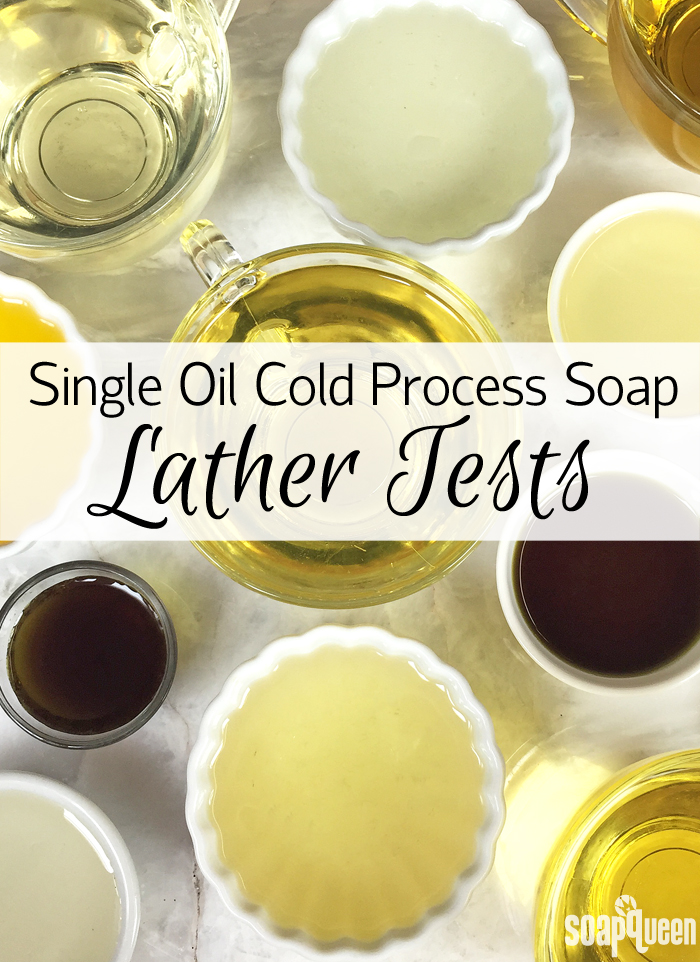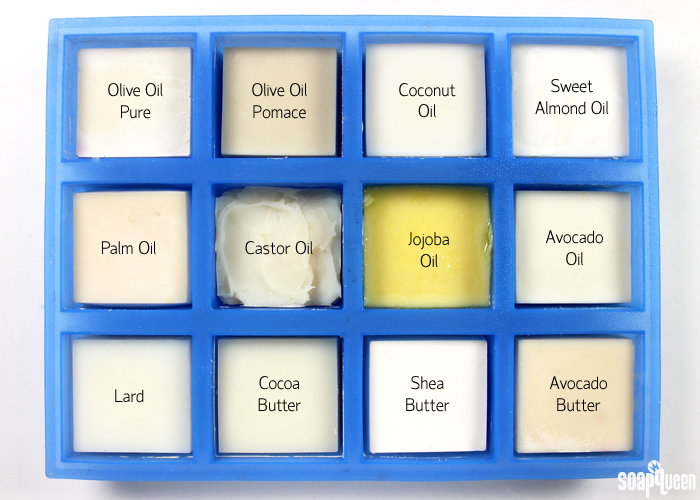
The most fundamental way that cold process soap can be customized is by using various combinations of soapmaking oils and butters. Each oil contributes something different to the final bar. For example, coconut oil is known for giving soap cleansing properties with a large fluffy lather. Olive oil, on the other hand, is not very cleansing, but is gentle on the skin. Using different combinations of oils at different usage rates will greatly affect the finished product. If you’d like to learn more about the properties of each soapmaking oil, check out this blog post.
Cold process soap can be made with only one oil, such as castile soap, which usually refers to soap made with 100% olive oil. Soap made with 100% olive oil is extremely gentle, but the lather is very minimal and it may initially be a softer bar. When soap is only made with one oil it may not be the most balanced bar. By adding coconut oil to the recipe, you give the bar cleansing properties. Each oil contributes something different to create a more balanced bar; this is why most cold process recipes are made with 3-6 different oils and butters. Check out the Formulating Cold Process Recipe post for more information on creating recipes, and the How to Substitute Oil in Cold Process Recipes post to learn how to swap them in existing recipes.
To take a closer look at how various oils and butters change the final bar, I created twelve bars made with 100% of one oil. Then, I let the soaps cure for a full six weeks. After they were done curing, I tested their lather. I also took note of how hard the bar was, how my skin felt after use and any other interesting characteristic.
